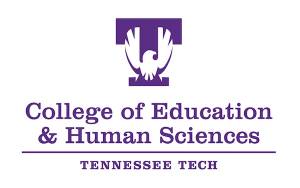Council for Accreditation of Educator Preparation (CAEP)

CAEP accreditation includes undergraduate and graduate levels of professional education programs offered at Tennessee Tech. Accreditation is the process by which the profession of teaching declares its expectations for teacher education and applies these expectations to institutions that prepare members of the profession.
CAEP establishes standards and procedures to carry out the accreditation process and provides training for those who conduct on-site review of higher education institutions. The essential function of external, national accreditation is to provide professional judgment of the quality of a teacher education program and to encourage continuous improvement in the program.
Institutions that are accredited nationally are required to provide quality professional education programs that foster competent practice by graduates of their programs.
As a part of the accrediting process, the College of Education & Human Sciences must meet rigorous standards of excellence developed by professional educators.
The college must demonstrate that its programs reflect established knowledge and sound professional practice, must establish and uphold national standards of excellence, and must strengthen the quality and integrity of professional education.
Through the accreditation process, CAEP provides assurance to the public that professionally accredited units have met national professional standards.
CAEP Accountability Measures
The Annual Accreditation Report (Annual Report) process, is used to monitor and evaluate an educator preparation provider's (EPP) continued compliance with CAEP standards. The annual monitoring and evaluation expectations of accredited EPPs are periodically revisited, as appropriate, to meet the requirements of CAEP policy, recognition guidelines of the Council for Higher Education Accreditation (CHEA), and federal accreditor recognition requirements.
The following sections contain information and data related to accountability measures as define by CAEP. This information is collected annually via a variety of data sources. For more information on each CAEP accountability measure, please click on the appropriate section below.
CAEP-Accredited Specialty Area Programs
Initial Programs
|
Agriculture Education/Agriscience 6-12 (dual endorsement) |
Family & Consumer Science 6-12; Early Childhood Care & Services 9-12 (dual) |
Middle Grades ELA 6-8 |
|
Biology 6-12 |
Family & Consumer Science 6-12; Food Production & Management Services 9-12 (dual) |
Middle Grades Math 6-8 |
|
Chemistry 6-12 |
French 6-12 |
Middle Grades Science 6-8 |
|
Computer Science K-12 |
Geography 6-12 |
Middle Grades Social Studies 6-8 |
|
Early Childhood Education PreK-3 |
German 6-12 |
Occupational -- All Occupational areas |
|
Early Childhood Education PreK-3; Special Ed: Preschool/Early Childhood Education PreK-3 (dual endorsement) |
Government 6-12 |
Physical Education K-12 |
|
Earth Science 6-12 |
Health & Wellness |
Physical Education K-12; Health & Wellness (dual endorsement) |
|
Economics 6-12 |
History 6-12 |
Physics 6-12 |
|
Elementary Education K-5 |
Instrumental/General Music K-12 |
Spanish 6-12 |
|
English 6-12 |
Interventionist 6-12 |
Special Education: Comprehensive K-12 |
|
English as a Second Language PreK-12 |
Interventionist K-8 |
Special Education: Comprehensive K-12; Interventionist K-8 (dual endorsement) |
|
Family & Consumer Science 6-12 |
Mathematics 6-12 |
Special Education: Preschool/Early Childhood Education PreK-3 |
|
Speech Communication 6-12 |
Speech Communication 6-12/Theatre K-12 (dual endorsement) |
Theatre K-12 |
|
Visual Arts K-12 |
Vocal/General Music K-12 |
|
CAEP-Accredited Advanced Programs
|
Instructional Leadership |
Library Science |
Literacy |
|
School Psychologist |
School Counselor |
|
CAEP Standards
CAEP bylaws require a review of the CAEP Standards every seven (7) years. The CAEP Research Committee was charged in 2018 with updating the research related to the CAEP Standards.
The CAEP Board of Directors created a task force in June 2020, which spent months reviewing data and reports from the CAEP Research Committee and the CAEP Equity and Diversity Committee. The task force also reviewed US Department of Education (USDOE) and CHEA guidelines, more than 300 CAEP accreditation decisions, as well as feedback from stakeholders. It was composed of 21 representatives from the field of education, including P-12, higher education, state education departments, and non-profit education organizations. The task force focused on reviewing the 2013 standards, specifically seeking to consolidate, clarify, and streamline the standards.
In most cases the changes include the consolidation, clarification, and the removal of extraneous language. In addition, specific standards for technology have been added, given the increase in online learning. Equity and diversity measures have been specifically included in components of the standards to ensure proper attention is given and each provider must demonstrate progress toward recruiting and graduating a candidate pool that reflects the diversity of America’s P-12 students, as well as increased flexibility in documenting candidates academic knowledge and their impact on student learning and development.


